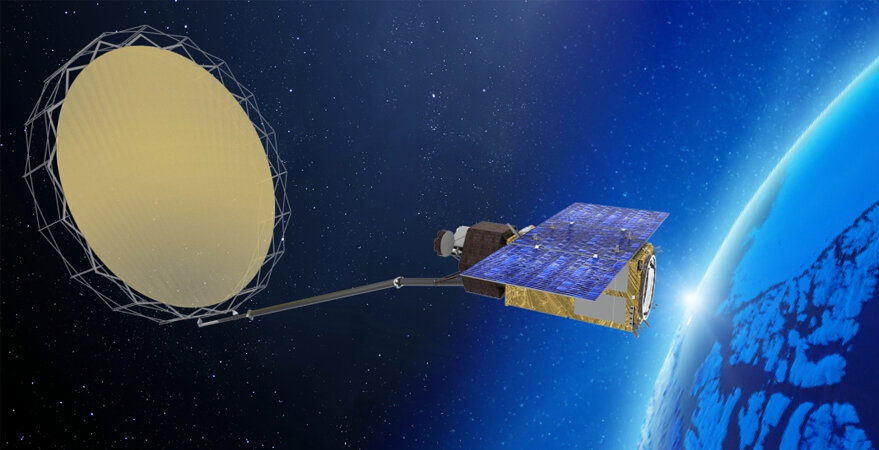Products You May Like
VALLETTA, Malta — The European Space Agency (ESA) signed contracts for three pairs of satellites for the agency’s Earth-observing Copernicus program on Nov. 13 with a total award value of more than 1.3 billion euros ($1.54 billion).
The three Copernicus satellite pairs are part of six High-Priority Candidate Missions approved during ESA’s Council at Ministerial Level Space19+ in Seville, Spain one year ago.
Each mission is designed to respond to priority policies outlined by Europe and in particular, the European Union. The European Commission and ESA plan to jointly finance the missions.
Thales Alenia Space will receive the lion’s share of funding as Thales Alenia Space Italy leads the campaign to develop Copernicus Imaging Microwave Radiometer (CIMR) and Thales Alenia Space France spearheads efforts to develop the Copernicus Hyperspectral Imaging Mission (CHIME).
CIMR is scheduled to launch in 2028 aboard an Arianespace Vega C rocket. Each of the two satellites will carry an antenna eight meters in diameter to unfurl in orbit. The antennas are designed to collect L-band microwave emissions from 1.4 to 7 gigahertz.
Once launched, the CIMR satellites will provide observations of sea-surface temperature, sea-ice concentration and sea-surface salinity. Josef Aschbacher, ESA Earth Observation Programmes director, told SpaceNews the CIMR satellites will set the standard for resolution and performance.
While Thales Alenia Space Italy develops the CIMR spacecraft, OHB Systems AG, the Italian branch of German space technology company OHB SE, is developing the CIMR instrument. The satellite and instrument awards are valued at 495 million euros.
The CHIME mission is slated for launch in 2029 aboard a Vega C. The CHIME satellites will carry shortwave infrared spectrometers to make hyperspectral observations for sustainable agriculture and biodiversity management.
Thales Alenia France leads the CHIME mission with OHB SE of Germany building the instruments, under contracts with a combined value of 455 million euros.
Airbus Defence and Space Spain leads development of the third mission, Copernicus Land Surface Temperature Monitoring (LSTM), under a 389 million euro contract. Airbus Defence and Space France is developing LSTM instruments.
According to Aschbacher, the LSTM satellites will complement the Sentinel-6 Michael Freilich satellite, a joint NASA/ESA venture scheduled to launch aboard a SpaceX Falcon 9 rocket on Nov. 21. Data drawn from LSTM thermal-infrared sensors will compliment the Sentinel-6 satellite’s optical observations. The LSTM mission is focused on improving the productivity of sustainable agriculture.
Like CHIME, LSTM is slated to launch aboard a Vega C in 2029.
Despite having signed contracts, the CIMR, CHIME and LSTM missions still need to make it through a key milestone to obtain full funding. In mid-to-late 2021, the European Union and ESA member states will decide whether to proceed with the development of the three missions.
In addition to the three High-Priority Candidate Missions signed Nov. 13, ESA awarded additional Copernicus contracts in July and September. ESA and OHB SE signed a 445 million euro contract in July for the Copernicus Anthropogenic Carbon Dioxide Monitoring mission. ESA signed a 300-million-euro contract with Airbus in September to develop an ice-monitoring satellite called Copernicus Polar Ice and Snow Topography Altimeter mission.
An additional contract for the Radar Observing System for Europe-L-band SAR mission is expected to be signed in three to four weeks, Aschbacher said. Development of the SAR satellites will be led by Airbus Defence and Space Italy with Airbus Defence and Space Germany responsible for the instrument. The contract is expected to be worth approximately 500 million euros.
